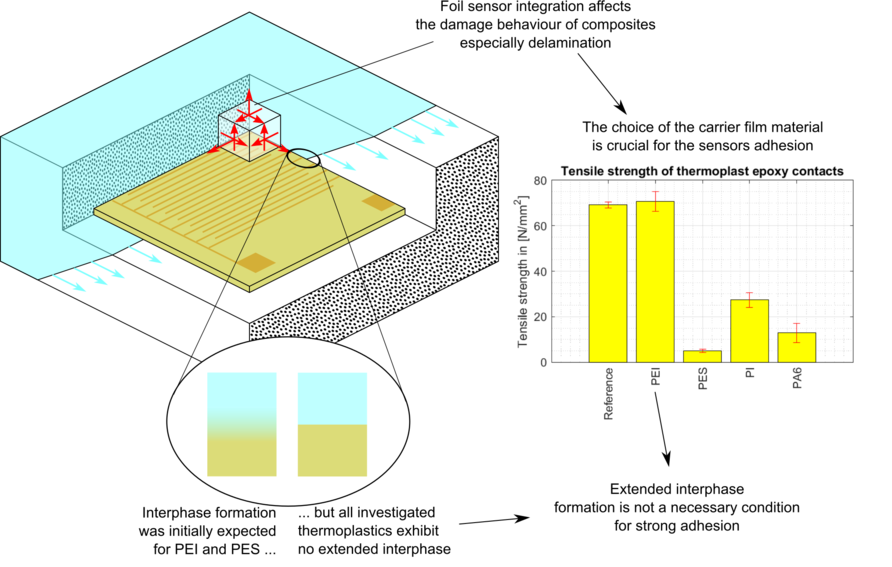The article presents a study on the adhesion of thermoplastic films to a room temperature-hardening epoxy resin, which deals with an important question on sensor integration into fibre composites. By means of a morphological box, a test specimen is developed, which allows to test strength values for the adhesion of thermoplastic films to epoxy resin. Polyimide (PI), which is typically used as a carrier material for flexible sensors, is compared with the thermoplastics polyetherimide (PEI), polyethersulfone (PES) and polyamide 6 (PA6). To evaluate the spatial formation of the interface, images taken with a light microscope, fluorescence microscope and electron microscope and an energy-dispersive X-ray spectroscopy (EDX) analysis are presented. The images show that during the curing process of the epoxy resin the initially expected pronounced interphase does not form. In this respect, it is surprising that PEI achieves such a high adhesion strength even without extended interphase formation, that the failure of the test specimen occurs in the epoxy resin region at a tensile stress of 70 MPa and not at the interface between epoxy and PEI, as might initially be assumed. It is also surprising that PES exhibits the lowest adhesion strength of 5 MPa to room temperature-hardening epoxy resin, although in previous investigations it was often used as a soluble toughness modifier for epoxy resins. The tensile adhesion strength of PI to epoxy resin was found at 27 MPa and the tensile adhesion strength of PA6 to epoxy resin was found at 13 MPa. For sensor integration, the findings mean that flexible sensors on PEI substrates promise a low tendency to delaminate even in the room temperature-hardening epoxy resin used, while the other materials tested indicate an increased tendency to delaminate.
A. Kyriazis, R. Kilian, M. Sinapius, K. Rager, A. Dietzel
Tensile Strength and Structure of the Interface between a Room-Curing Epoxy Resin and Thermoplastic Films for the Purpose of Sensor Integration
Polymers, 13(3), 330, (2021) [Link]

